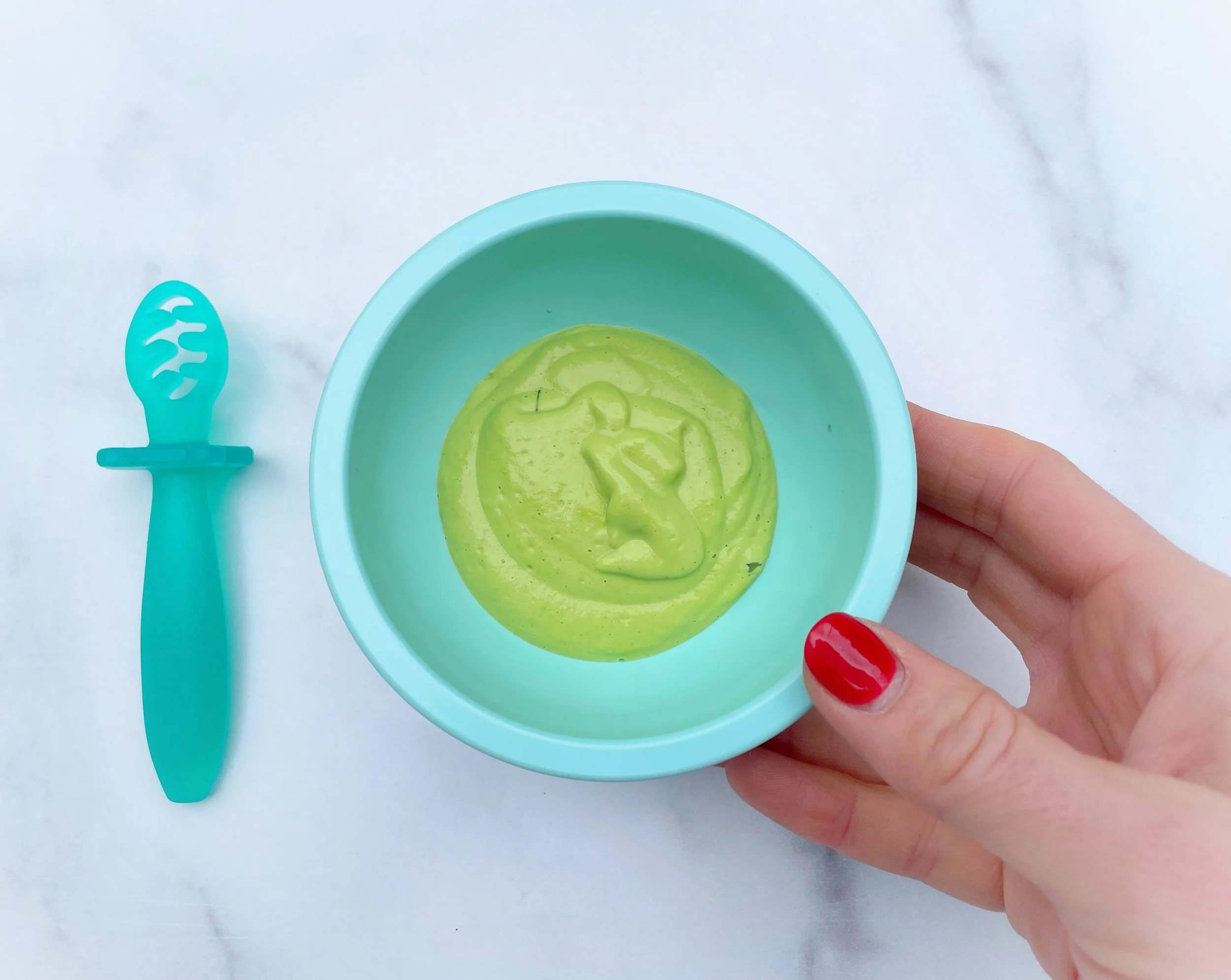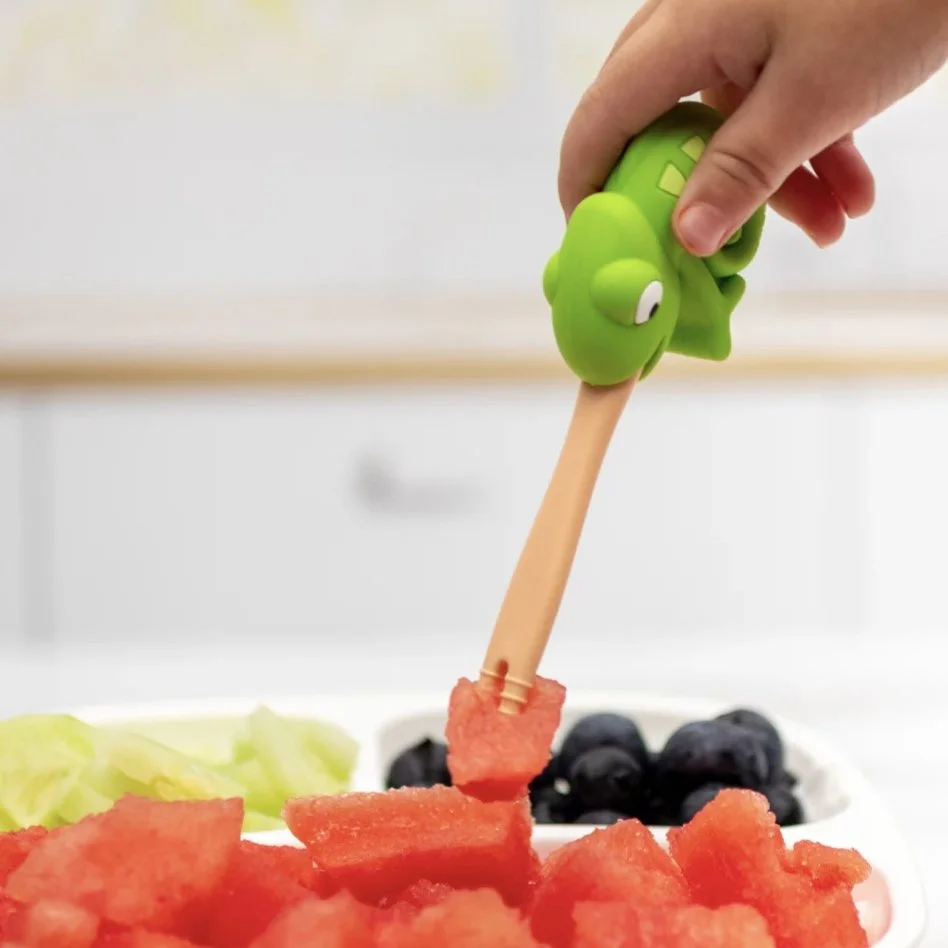Best 1-Year-Old Feeding Schedules
This blog contains affiliate links, meaning that if you choose to purchase a product through a link, I will receive a small commission - this in no way impacts the amount you pay. Affiliate links are marked with an asterisk (*).
As parents, one of our most common concerns about our 1-year-olds is whether they are eating enough. At 12 months, your baby is perhaps working on weaning from the bottle and drinking milk in a cup, transitioning to drinking cow’s milk (or a quality plant milk alternative), and eating table foods fairly well. You may have also noticed a slight drop in your baby’s appetite around 12 months old, and they may suddenly seem less interested in eating.
If you haven’t already started building in a feeding schedule, now is a great time! Young toddlers generally crave a routine, and it can be helpful to create a dependable rhythm as you are learning your baby's new eating patterns, which can vary depending on the day.
Navigating your child's nutrition during this critical developmental stage can be challenging, but fear not! As a pediatric registered dietitian and mom of three girls (who have all successfully made it through the toddler phase), my goal with this blog post is to help you create a feeding schedule that best fits your 12-month-old as well as your family's individual needs, addressing common questions about portion sizes, picky eating, and milk consumption.
Why are feeding schedules important?
A feeding schedule helps ensure that kids feel hungry at meal times, which can help reduce picky eating and undesirable table manners (like throwing food). It prevents filling up on snacks between meals and grazing throughout the day, both of which make mealtimes harder. A 12-month-old feeding schedule can also help prevent hangry (or overly hungry) toddlers by providing a meal three times a day along with a couple of snacks in between to keep up with their nutrient needs and quick metabolism.
Additionally, when parents use a responsive feeding style that follows their child’s hunger and fullness cues, a schedule can help encourage healthier eating habits. As a parent, if you offer balanced, nutrient-dense meals and snacks at regular intervals throughout the day, it is up to the child to decide whether to eat and how much.
Nutritional Needs of a 1-Year-Old
Before diving into a feeding schedule, it's helpful to understand the nutritional requirements of a 1-year-old. During infancy, a baby’s primary source of nutrition is breast milk and/or formula. At 12 months of age, babies transition from a diet primarily composed of breast milk or formula to a more diverse diet that includes more solid foods. The following are a few key points to keep in mind:
A balanced diet for a 1-year-old ideally includes foods from all food groups:
Grains: Complex carbohydrates are essential for energy; provide 3-4 servings of grains daily, such as whole-grain bread, pasta, rice, and cereals
Fruits: Aim for 2-3 servings of fruits each day, offering a variety of options
Vegetables: Include 2-3 servings of vegetables, offering a variety of different colors and types
Protein: Protein builds and repairs muscles; offer 2 servings of protein sources daily, including lean meats, poultry, fish, tofu, legumes, and dairy products
Dairy: Provide 2-3 servings of dairy or dairy alternatives, such as milk, yogurt, and cheese
Healthy fats: These include omega-3 fatty acids and other unsaturated fats found in foods, like avocados, nuts, nut butter, seeds, salmon, and olive oil
** If your family chooses a lifestyle diet such as a plant-based diet, plan accordingly so that you can provide the critical nutrients your child needs for healthy growth and development. If you have questions about what to include (and how), book a 1:1 session with me in my private practice, and we’ll plan it out together.
2. Portion Sizes
Portion sizes for a 1-year-old are relatively small compared to adults. Babies have small tummies, so offering appropriate serving sizes is important. It’s best to offer foods that are packed with nutrients, but don’t worry if your little one doesn’t finish everything on the plate. And remember, it's okay if your child's appetite varies from day to day.
According to the USDA’s MyPlate, kids ages 12-24 months need approximately 800-1000 calories per day in order to gain weight and grow appropriately. If you would like more specific examples of portion sizes, please check out this nifty chart from the American Academy of Pediatrics.
3. Milk Consumption
Milk remains an integral part of a 1-year-old's diet, but it's important to monitor the quantity because too much milk can cause iron deficiency and may contribute to constipation. Too much milk can also interfere with a child's appetite for other essential foods.
A 1-year-old should have around 16 ounces of whole milk daily to help ensure they receive the necessary calcium and vitamin D for healthy growth. If your child can't tolerate dairy or you prefer plant-based alternatives, here is a guide that will help you determine which milk alternative is best for your child.
What foods should I avoid with my 1-year-old?
It is important to always supervise your child while they are eating. Ensure your child sits upright in a high chair, ideally with their feet planted on a footrest to provide stability. There are a few foods that it’s best to avoid in young toddlers between 12 and 24 months, including:
foods with added sugars and sweeteners
high-sodium foods
unpasteurized juice, milk, yogurt, or cheese due to the risk of foodborne illness
choking hazards, such as hot dogs, uncut grapes, uncut cherry tomatoes, hard cheeses, popcorn, and whole nuts
Sample Feeding Schedule
Starting at 12 months old, babies ideally eat 3 meals and 2-3 snacks daily, spaced about 2 to 3 hours apart. Most babies this age still take 1 to 2 naps a day, so building a feeding schedule around their sleep schedule is helpful.
Here’s a basic young toddler sample feeding schedule:
7:00 am Breakfast
Nap
10:00 am Morning Snack
12:00 pm Lunch
Nap
3:00 pm Afternoon Snack
6:00 pm Dinner
Evening Snack (optional)
Bedtime
** These times are only an example. Your baby may be an early riser or night owl, and their day may start at a different time. Further, not all babies take two naps and/or are hungry for 2-3 snacks, so find what works best for your family.
Easy 1-year-old Feeding Schedule (with toddler-friendly recipe ideas):
Breakfast (7-8 a.m.)
Mid-Morning Snack (10-10:30 a.m.)
- ½ cup yogurt with soft, diced fruits, or this Brain-Boosting Smoothie
- Water in a straw cup or open cup
Lunch (12-1 p.m.)
- ½ cup steamed or cooked vegetables (e.g., carrots, broccoli)
- ½ cup cooked quinoa or brown rice
- 6 oz whole milk or dairy-free alternative
Afternoon Snack (3-3:30 p.m.)
- Sliced cucumbers or bell peppers
- ¼ cup hummus, dairy-free dip (like Cashew Dip) or a yogurt-based dip for veggies
- Water
Dinner (5-6 p.m.)
- 1 ounce of baked or grilled salmon
- ½ cup mashed potatoes or sweet potatoes
- ½ cup green beans
- Water
Before Bed (7-8 p.m.)
- ½ Banana cut in bite-sized pieces with a thin layer of peanut butter spread on top (if no allergies)
- 4 oz whole milk or a dairy-free alternative
When should I be worried about my child’s appetite or picky eating?
In general, trust your child’s appetite as long as they’re growing appropriately and following their growth curve on the growth charts. Restricting food or forcing kids to eat can lead to an unhealthy relationship with food and raise the risk of eating disorders. If your child is missing entire food groups in the diet, not filling diapers regularly, or if eating seems to cause large amounts of stress, pain, or discomfort, talk to your to your pediatriican about your concerns.
One of the best ways to help prevent picky eaters is to eat with your child, as toddlers benefit from role modeling when they eat what the rest of the family eats. Make meal times fun – try using these playful food picks from Dabbledoo*. And keep offering foods, even if your child doesn’t seem interested, because repeated food exposure helps reduce picky eating behaviors over time.
If your child begins to lose weight, seems sick, is not filling diapers as frequently as usual, or seems more tired than usual, consult with a trusted healthcare professional for specific dietary concerns or questions about your child's growth and development. If you are looking for help navigating picky eating behaviors, check out my online course, Solve Picky Eating, a self-paced set of 12 modules that are delivered quickly in 5-15 minute videos.
For more tips on feeding kids, grab my FREE guide to reducing picky eating. And if you're looking for personalized nutrition support for yourself or your kids, I am currently accepting new clients in my virtual private practice. Thanks for reading!















